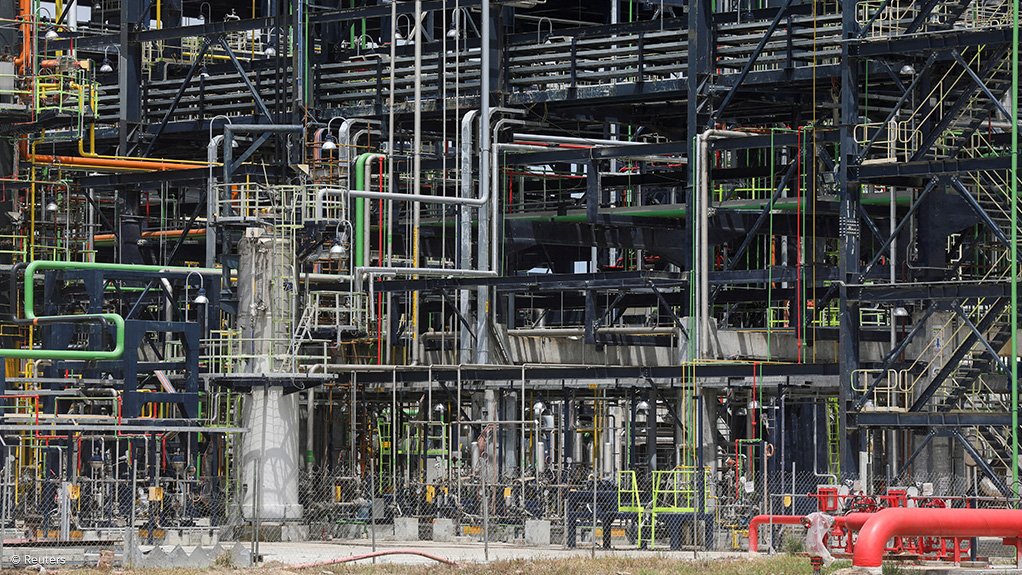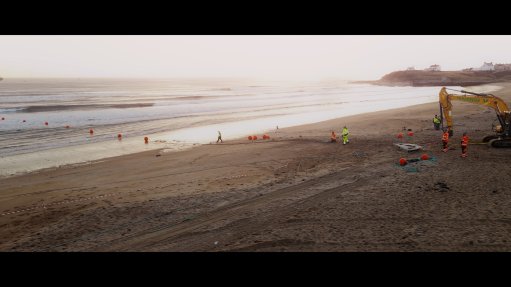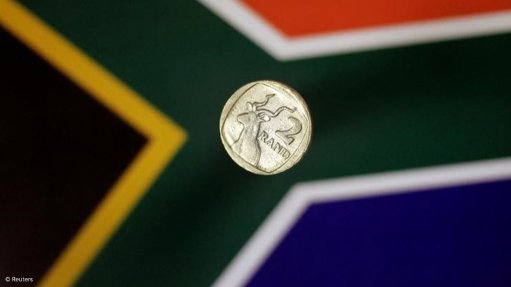Africa needs to build more oil infrastructure
Africa's mid- and downstream oil products supply infrastructure is ageing and suffers from a lack of investment, outdated policy frameworks and insufficiencies in regional, national and urban energy planning when compared with other regions across the world.
Efforts have also not kept pace with rapidly growing populations and urbanisation trends, which has resulted in fragmented supply routes, bottlenecks and insufficient infrastructure capacity, contributing to an overreliance on trucks, congestion in cities and ports, and disrupted access to energy.
This collectively results in increased costs for governments and citizens, and is impairing the region’s socioeconomic development potential, energy company Puma Energy and Africa energy consultancy CITAC note in their 'Fuelling Africa's Potential: Bridging the Gap in Energy Infrastructure' White Paper.
Demand in sub-Saharan Africa for oil products, including gasoline, diesel, kerosene and Jet A1 fuel, increased by 9.2% year-on-year in 2021 and by 3.7% year-on-year in 2022 to reach 91.3-million tonnes.
CITAC's forecasts, which incorporated data from United Nations population projections, estimate that demand growth for these oil products will remain strong, rising by 49.7-million tonnes, or by 56%, between 2023 and 2040, to reach 142-million tonnes.
Further, meeting demand has proven increasingly challenging. Domestic refining capacity has not managed to keep pace with demand requirements, and refinery output of clean oil products has fallen to 17-million tonnes in 2022 from 32-million tonnes in 2013. This has resulted in a net clean oil product shortfall that has risen to 80-million tonnes from 49-million tonnes during the decade.
Additionally, new refining capacity in the form of the industrial development group Dangote’s project, in Nigeria, along with other developments, will help to narrow the clean oil product shortfall. This shortfall is forecast to be 67-million tonnes in 2030, down from 80-million tonnes in 2022.
It will continue to expand in the absence of further capacity additions, the parties note in their White Paper.
From a logistical standpoint, it is worth noting that with refineries of the scale of Dangote, seaborne product exports from Nigeria will be necessary. Assuming that these exports will be supplied into West and Central markets, these markets will still require significant investment in import infrastructure to handle the volumes delivered by vessel.
"Continued economic development, population growth and urbanisation trends underpin the growing need for clean oil products over the forecast period. Robust supply chains and sourcing systems are needed to support this growing energy need," the report stated.
Historically, international funding and aid has helped to support and develop supply chains, but national budgets are under pressure from higher interest rates, inflationary pressures, the fallout from conflicts and the global pandemic. The cost of borrowing and the depreciation of African currencies in many countries also makes investment a challenge.
Therefore, it is important that infrastructure projects are economically defensible or, where they are not, policies are developed to support projects that will bring direct benefit to society, Puma and CITAC state.
BEST PRACTICE IMPROVEMENTS
Meanwhile, CITAC has identified elements of the supply chain that can be improved through the application of best practice and sound investment.
For example, a total of 750 000 t of greenhouse-gas emissions could be saved in 2030 across the supply chains studied in the White Paper through the adoption of pipelines, thereby removing as much as 95% of trucks required.
Other supply chain elements that can be improved include streamlining border controls and customs procedures, accelerating truck loading and evacuation policies, and debottlenecking efforts.
"These measures have the additional advantage of reducing the number of trucks required to serve demand, bringing with them an environmental dividend as emissions related to energy distribution are cut, road congestion is eased, and the number of road traffic accidents could also decline.
"Such efforts have the potential to bring cost savings of between 0.3% of 2023 gross domestic product (GDP) in South Africa to as high as 5.4% of 2023 GDP in Mozambique."
Additionally, parts of the supply chain infrastructure used in traditional fuels, if planned for correctly, can be adapted to transitional fuels and lower carbon energy fuels, including sustainable aviation fuels, liquefied petroleum gas and green hydrogen. These can also benefit wider trade infrastructure, such as ports and railways.
"This complements the decarbonisation of the power sector through resources such as wind, solar and hydropower," the paper outlines.
The key objective of supply chains is to ensure adequate provision of energy to the consumer and at the most economic price point possible. The key features needed to achieve these goals include conducive regulations, market-based pricing of fuel products, and adequate infrastructure.
"CITAC recommends governments pursue a regional approach to market regulation and policy. A regional approach facilitates better economies of scale, creating the potential for land-linked countries to coordinate volumes to be imported in harmony with neighbouring transit countries," the parties advise.
Similarly, harmonisation of specifications improves security of supply for countries that can potentially source products from neighbouring markets in the event of supply disruptions, CITAC adds.
Further, harmonising product specifications has been a key facilitator of improved economics of supply and ensuring supply routes can be diversified without relying on segregated supply chains.
"Harmonisation has already been achieved in many subregions and efforts are under way, led by the African Union through the African Refiners and Distributors Association, to harmonise product specifications across the continent.
"As growing attention on specifications leads to changes at different speeds in different countries, maintaining harmony across regions where it exists today will be an important factor to coordinate," the paper shows.
SUPPLY INFRASTRUCTURE
Ageing infrastructure often suffers from a lack of maintenance, modernisation and investment, resulting in deteriorating supply economics. State-owned infrastructure, in particular, faces these challenges. This can be storage, railways, ports, pipelines and similar, as they are often not subject to the same economic realities that private operators are subjected to.
This can result in costly delays and demurrage, which is the charge payable by the charterer to the shipowner when a vessel fails to discharge or load within the time agreed.
"Governments need to identify ahead of time where bottlenecks will appear, based on projected trends. This entails evaluating existing and planned infrastructure and mapping the adequacy of this against demand projections and supply dynamics so that further investment in infrastructure can be secured in a timely manner," the parties recommend.
Further, certain trends, such as the reliance on trucking for bulk transportation, must also be identified as a challenge to scale, namely that alternative bulk transportation methods will eventually be needed to support the growing volumes of product required.
A key factor behind rising bottlenecks is the fact that sub-Saharan Africa is urbanising rapidly. African urban planners are struggling to keep pace with the rate of growth of their cities. This leads to inefficient road systems and large, sprawling neighbourhoods.
The rapidly growing urban population causes increasing congestion on road networks, typically the primary method for transporting people and goods, among other challenges. The issue of congestion is made worse by the fact that most major cities in coastal African countries are also major working ports, which support the import and export of goods, and placing greater strain on logistics networks.
"Given these demographic trends, it is essential to start thinking of solutions to the problems associated with increasing congestion. This includes higher rates of traffic accidents, productivity losses, higher pollution and disruption to the supply of goods. Where possible, rail, pipelines and larger ports can present efficient solutions to the continent’s growing logistical problems," the report states.
MONOPOLY EFFICIENCIES
Natural monopolies, such as pipelines, railways, ports, refineries, power generation, and grid-based distribution operators, are run by State-owned enterprises.
Operators across Africa complain about inefficiencies stemming from the unoptimised operation of infrastructure by such enterprises. Inefficiencies typically lead to substantial losses at these State enterprises, requiring the State to intervene and provide financial liquidity, the paper states.
"Efficiency at State-run infrastructure enterprises can be improved by introducing greater accountability across management for the financial performance of the facility. Applying more rigorous project management techniques to ensure timely execution of maintenance, expansion, and investment could help to make ageing State-run infrastructure more economical, helping to reduce the cost to the end consumer," Puma Energy and CITAC say.
Another approach is the introduction of a private partner. Private-public partnerships can deliver improved efficiencies through the application of best management practices and cost efficiencies while not relinquishing control over assets with national strategic importance.
"Africa cannot pursue the aggressive path of decarbonisation championed in the developed world due to its lack today of scalable zero or low carbon alternatives. Rapid decarbonisation of Africa’s energy mix would have significant economic and social consequences owing to the lack of readily available alternatives to fossil fuels.
"It is expected, therefore, that Africa will need to focus on reducing the environmental impact of the fossil fuels on which it relies as its demand for these energy sources continues to rise," the parties note.
Article Enquiry
Email Article
Save Article
Feedback
To advertise email advertising@creamermedia.co.za or click here
Comments
Press Office
Announcements
What's On
Subscribe to improve your user experience...
Option 1 (equivalent of R125 a month):
Receive a weekly copy of Creamer Media's Engineering News & Mining Weekly magazine
(print copy for those in South Africa and e-magazine for those outside of South Africa)
Receive daily email newsletters
Access to full search results
Access archive of magazine back copies
Access to Projects in Progress
Access to ONE Research Report of your choice in PDF format
Option 2 (equivalent of R375 a month):
All benefits from Option 1
PLUS
Access to Creamer Media's Research Channel Africa for ALL Research Reports, in PDF format, on various industrial and mining sectors
including Electricity; Water; Energy Transition; Hydrogen; Roads, Rail and Ports; Coal; Gold; Platinum; Battery Metals; etc.
Already a subscriber?
Forgotten your password?
Receive weekly copy of Creamer Media's Engineering News & Mining Weekly magazine (print copy for those in South Africa and e-magazine for those outside of South Africa)
➕
Recieve daily email newsletters
➕
Access to full search results
➕
Access archive of magazine back copies
➕
Access to Projects in Progress
➕
Access to ONE Research Report of your choice in PDF format
RESEARCH CHANNEL AFRICA
R4500 (equivalent of R375 a month)
SUBSCRIBEAll benefits from Option 1
➕
Access to Creamer Media's Research Channel Africa for ALL Research Reports on various industrial and mining sectors, in PDF format, including on:
Electricity
➕
Water
➕
Energy Transition
➕
Hydrogen
➕
Roads, Rail and Ports
➕
Coal
➕
Gold
➕
Platinum
➕
Battery Metals
➕
etc.
Receive all benefits from Option 1 or Option 2 delivered to numerous people at your company
➕
Multiple User names and Passwords for simultaneous log-ins
➕
Intranet integration access to all in your organisation




















